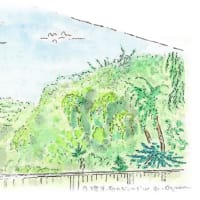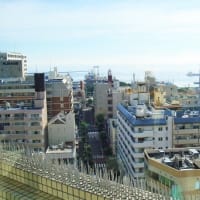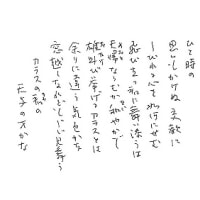3/13午後、Japan Timesの記者から、電話インタビューを受けました。
ご参考までにQ&A対応を以下の通りご説明します。(現時点までの進展と当時の状況は、およそかけ離れたものとなったが、敢えて手を加えずに当時の応答をそのまま収録しておく。)
原子力OBの立場で、情報源はTV・新聞・インターネットなどに限られ、当事者からの生の情報などは無いことを前提に、お応えすると断わっての対応でした;
Q1. 事故報道をどの様に受け止めているか? 深刻の程度は?
A: ●東電さんと国は大変冷静に対応して、厳しい地震による事故対応を適確に
処理しておられるので、基本的には安心している。
●原子炉の核反応は制御棒が直ちに挿入され、スクラムが成功したので、
核反応は停止した。
●その後の炉心の残余の熱(崩壊熱)の冷却は、非常用ディーゼル発電機が
地震・津波被害により作動せず、このため緊急時冷却系が残念ながら
使えなかった様だ。
●しかしなが、原子炉の蒸気は原子炉格納容器・圧力抑制プールに逃し、
原子炉格納容器の内圧が上昇したので、内部の空気の一部を排気塔から
排出し原子炉圧力容器と原子炉格納容器の健全性は維持された。
●更に最終的には、1号機では原子炉へ海水を注入して、炉心を冷却した。
●原子炉建屋の外壁の一部が破損し、建屋内の微量の放射能物質の一部が
外へ排出された可能性があるが、原子炉内の核燃料や核分裂生成物は、
健全性が維持された原子炉圧力容器と原子炉格納容器内に閉じ込められて
いるので、安心してよい。
チェルノブイル事故とは、ここが本質的に違うので、正しく理解して欲しい。
●極一部の放射性物質は外部に放出されたが、原子力発電所の事故時に最も
大切な「止める」「冷やす」「閉じこめる」機能は、この様にして
達成されたので、是非とも冷静に正しく報道願いたい。
Q2. これからの対応では、何が大切か?
A : ●国民の皆様に適確な情報発信をタイムリーに伝え、正しいご理解を頂くこと、
いたずらに恐怖感を煽ることなどのないような、メディアの皆様のご協力を
切に望みたい。
原子力シニアに確認して記事をお書きになる、JapanTimes さんの姿勢は、
大変にご立派です。
中越沖地震では燃料プール水が漏れ出したが、9万ベクレルもの放射能が
漏れたとの報道だった。一般市民は9万ベクレルとの数字に恐怖感を抱く
ばかりだった。一人当たりが有する自然放射能は7000ベクレルゆえ、13人が
海水浴するのと何ら変わらない。
市民の皆様が正しくご理解頂けるような、情報伝達が大切なので、是非とも
ご協力願いたい。
●非常用ディーゼル発電機・緊急時冷却系の設計は世界共通であるが、
激甚地震と津波の影響とはいえ、作動出来なかった点については、今後の
技術検討の課題だ。
Q3. 今後の放射性物質の拡散の可能性は?
A: ●1号機の原子炉建屋外壁が破損し、原子炉格納容器内空気のベントなどに
より、微量の放射性物質が放出されたが、「止める」「冷やす」「閉じ
こめる」機能が達成されているので、更なる拡散の可能性は適確に防止出来た
と理解している。
Q4. 被ばくについてはどの様に受け止めているか? 人体への影響は?
●一部の方の被ばくが報道されているが、数値的にみて人体への影響は問題
ないと判断される。一般に200ミリシーベルト以下の一時被ばくであれば、
医学的な影響はないと評価されている。
●被曝された方は、衣服の除染やシャワーを浴びるなど、適切な管理がなされて
いると理解している。また管理も行き届いている様なので、汚染を拡大する
などの心配は無かろう。
●東電さんと国は、適切に放出管理をしており、退避管理も余裕をもった対処で
安心だ。
Q5. 最悪のケースを想定すれば、どの程度の範囲まで影響が拡がる
可能性があるか?
●今回の事態は、通常の原子力事故を超えて、過酷事故(severe accident)と
云われる殆ど最悪の事態でしたが、適切な対処で殆ど心配のない状態が確保
出来たと理解している。
●繰り返しになるが、「止める」「冷やす」「閉じこめる」機能が達成されて
いるので、これ以上の事故の拡大は防止出来たと理解している。
●退避管理も念のため大事を取って20Kmの範囲が設定されたが、実質的な
影響はごく限られた範囲になるものと推定している。
本日3/14、The Japan Times on line を確認しましたところ、上記電話インタビューを基に、Top 記事で下記の記名記事が掲載されていました。冷静かつ正確に報じていて、胸を撫で下ろした次第です。
・・・・・ 以下 The Japan Times on line 引用 ・・・・・
Monday, March 14, 2011
http://search.japantimes.co.jp/cgi-bin/nn20110314a4.html
ANALYSIS ”No signs yet of a Chernobyl-type catastrophe ”
By JUN HONGO and KAZUAKI NAGATA Staff writers
While the outcome of the crisis at a nuclear power plant in Fukushima
Prefecture remains uncertain, experts Sunday were quick to stress
there are no signs of a critical meltdown、let alone a catastrophe
comparable to the 1986 Chernobyl disaster.
"I think the worst scenario has been avoided," said Hiromi Ogawa,
a former engineer at Toshiba Corp. who managed its nuclear power
generation project.
Other pundits dismissed the notion of comparing the Fukushima crisis
to Chernobyl, noting that the two plants differ in basic construction,
including the setup of the reinforced containment vessel.
Ogawa said that the seawater poured into the Fukushima No. 1 reactor
had halted the nuclear reaction and that cooling was under way.
Ogawa added that the reactor's pressure vessel and container appear
to be sound, indicating its fuel has been confined.
"It is clearly different from the case of Chernobyl, in which a reactor
itself exploded and fissile substances spread outside," he said.
Chief Cabinet Secretary Yukio Edano also offered assurances, telling
a news conference Sunday that the government "has confirmed that
pumping of seawater is being processed as scheduled."
The nuclear rods are now completely covered with water and radiation
levels around the facility are not rising, the government's top
spokesman said, adding that the release of pressure through vents and
cooling the reactor with water will "allow us to manage the nuclear
reactor safely and under a stable condition."
According to the nuclear power safety agency, the accident at
the Fukushima plant has been assigned a status of level 4 on
the International Atomic Energy Agency scale. The IAEA defines level 4
as an incident including a minor release of radioactive material that
does not involve any significant risks beyond the facilities.
The Chernobyl accident in 1986 remains the only level 7 accident to
meet the IAEA scale.
The release of radioactive material there had widespread health and
environmental impacts that required extensive countermeasures.
The crisis at Three Mile Island in 1975, which saw a partial meltdown
and release of radioactive gas into the atmosphere, was rated as
a level 5 incident.
"I think the accident has been handled in a level-headed way,"
said Ogawa, the former Toshiba engineer.
While the Nuclear Power Safety Agency said as many as 160 Fukushima
Prefecture residents may have been exposed to radiation, the
government has repeated that the situation appears to be under
control.
Pundits say that although exposure to radioactivity may sound serious,
a radiation level of 1,015 microsieverts per hour ? the highest level
detected inside the power plant since the earthquake ? isn't as grave
as it sounds.
While it is equivalent to the allowable amount for an individual to
receive in one year, a regular X-ray used in hospitals exposes the
patient to about a one-third or one-quarter of that, said Tetsuo
Sawada, associate professor of reactor engineering at the Tokyo
Institute of Technology, during an appearance on a Fuji TV program.
According to the Nuclear and Industrial Safety Agency, evacuees can
reduce the risk of radiation exposure by wearing long-sleeve shirts
and masks, staying out of the rain, which is likely to contain high
amounts of radiation, and taking iodine if necessary. Those staying
near the site should shut all vents where they are sheltering, close
the windows and keep food and water covered.
Radiation Emergency Medicine Network Cancel, a group of experts who
treat those exposed to radiation, said it has dispatched 20 doctors
and nurses to back up local hospitals in Fukushima Prefecture in case
the number of such patients rises.
The group played a pivotal role during the fatal 1999 criticality at
the Tokai uranium-processing plant in Ibaraki Prefecture.
"We have experts from Hiroshima University joining us,"
a spokeswoman for the group said.
Yet, some of Tokyo Electric Power Co.'s measures indicate it is too
early to relax. For example, pumping seawater and boric acid into
a nuclear reactor is considered a last resort because it renders the
reactor useless.
Secretary General Yukiya Amano on Sunday released a video statement
praising Japan's measures but also said "there continues to be
concerns over Fukushima No. 1 plant."
Ogawa, the engineer, stressed that the media should not alarm the
public by reporting that the situation is dangerous, saying that
calm and accurate reports are needed since many people are sensitive
to the term radiation but are generally not familiar with the details.




















※コメント投稿者のブログIDはブログ作成者のみに通知されます